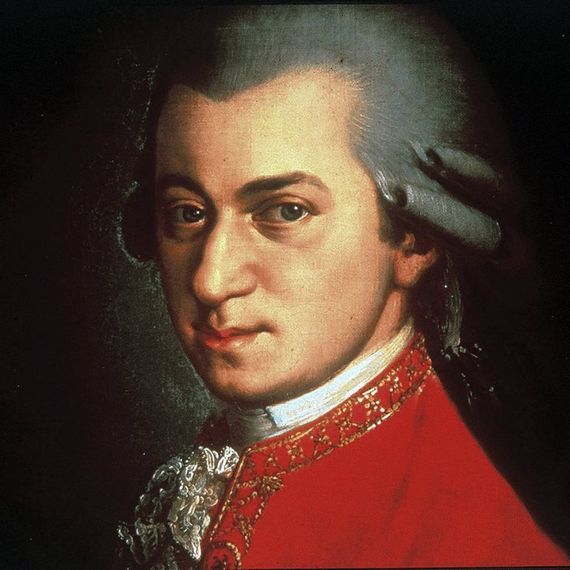When Mozart received a mysterious request to compose a Requiem during the summer, two ambitious operas were in the offing. He was already composing The Magic Flute, which he had to interrupt when he got a prestigious commission to write a serious opera, La clemenza di Tito, for the coronation of Leopold II as King of Bohemia. Mozart composed that work feverishly in August, travelling to Prague at the end of the month to conduct its premiere on September 6.
MOZART’S FINAL PROJECT
At some point in September Mozart began serious work on the Requiem, but legend has it (and more about other legends later) that when his wife, Constanze, returned from a rest cure at a spa in Baden she was distressed to see how exhausted he was and how obsessed he had become in particular with the Requiem, which she allegedly took away from him. Mozart nonetheless returned to its composition somewhat later and worked on the piece until his death early in the morning of December 5.
The well-known movie Amadeus fictitiously has Mozart on his deathbed dictating the Requiem to his rival Antonio Salieri, who was long rumored to have poisoned him. Although there was no such final meeting between the two composers (or any murder), Mozart did reportedly gather Constanze and various colleagues around him to sing through parts of the Requiem and instructed his student Franz Xaver Süssmayr on how to finish the piece.
The haunting opening of the Requiem, the only part completed by Mozart, may have been performed at his funeral a week later. Constanze enlisted a series of Mozart’s students to finish the Requiem; she asked Joseph Eybler, who did only minimal work, as did two others who orchestrated some incomplete sections. Most of the task of completion fell to the 25-year-old Süssmayr, thus earning him some limited fame as well as some infamy.
A LEGENDARY WORK
It is hardly surprising that so many legends surround the work. The idea of someone of Mozart’s gifts, just age 35, writing what he apparently came to believe was his own musical memorial was immediately appealing to contemporaries and even more so to later Romantics. Very soon after Mozart’s death a newspaper in his hometown of Salzburg reported that he composed the piece “often with tears in his eyes, constantly saying: I fear that I am writing a Requiem for myself.”
There are numerous uncertainties about the Requiem, most importantly about who actually composed much of the music. The manuscript shows that Mozart completed only the opening Introit, as well as most of the following Kyrie. The next sections to the opening of the Lacrimosa were drafted by Mozart, but not finished. For the final sections no authentic materials survive.
The mysteries about the piece begin with the circumstances of its genesis. A legend emerged that a “grey messenger” appeared to Mozart with the anonymous request for him to write a Requiem but that he should not ask who was initiating the commission. In fact it came from one Count Franz von Walsegg, who hired noted composers to write pieces that he would then pass off as his own. (It is not entirely clear that his intent was fraudulent—he seems to have enjoyed having invited audiences guess who the composer actually was.) In any case, Mozart was given half the handsome fee in advance and although pressed with his opera projects he was hardly in a financial position to refuse the lucrative offer.
Mozart had recently received an appointment as assistant music director of St. Stephen’s Cathedral (Vienna’s most prominent), which meant that composing sacred music would henceforth play a larger role in his career. Although he had written a large amount of religious music during his early years in Salzburg, this activity dropped off after moving to Vienna in 1781. His greatest sacred work, the Mass in C minor, K. 427, had remained unfinished, and such, of course, would be the fate of the Requiem as well. The masterly late music for the Requiem encompasses Mozart’s astounding range of styles, beginning with the pleading expressiveness of the Introit even before the first words are sung. The contrapuntal virtuosity of the double fugue in the Kyrie gives evidence of his increasing interest in the music of Bach and Handel. Mozart the keen dramatist is also present in this sacred score—the Magic Flute character of Sarastro may come to mind with the bass solo of the Tuba mirum.
After Süssmayr finished the piece, he wrote out a new score so as to avoid suspicion of its multiple composers; he forged Mozart’s signature and dated the manuscript 1792. The Requiem was then dispatched to Count Walsegg who in turn copied it all out again in his own hand and wrote “Requiem composta del Conte Walsegg” at the top. He conducted the work on December 14, 1793, at a Mass in memory of his wife, who had died two years earlier at age 20.

